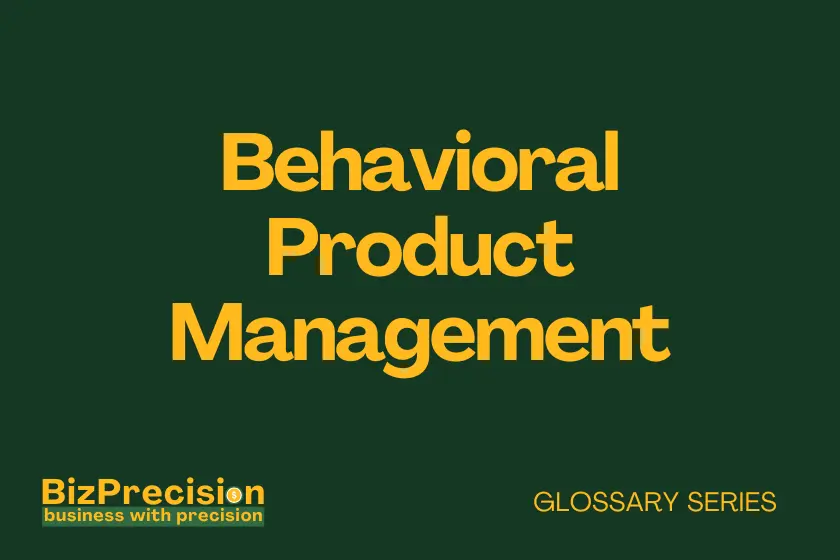What is Behavioral Product Management?
Behavioral Product Management is the practice of applying psychological principles to product development to align with natural human decision-making patterns.
Understanding how people make decisions shapes successful products. Recent data from McKinsey & Company (2023) shows that companies using behavioral insights in product development see 25% higher user engagement rates than those who don’t. This approach transforms how we build products that truly connect with users.
Understanding Behavioral Product Management Fundamentals
Core Principles of Behavioral Product Management
Product development becomes more effective when you understand how people think. The human brain uses mental shortcuts to make decisions. These shortcuts, called heuristics, affect how users interact with products.
Behavioral economics plays a key role in product strategy. Studies show that people often make choices based on emotions rather than logic. Understanding these patterns helps you create more engaging products.
Product teams use behavioral frameworks to guide development choices. These frameworks help predict user responses to different features. Testing shows that products built with behavioral insights have 40% higher adoption rates.
Key Components of Behavioral Product Management
Research methods form the foundation of behavioral product management. Teams collect data about user habits through surveys and usage tracking. This data reveals patterns in how people use products.
Decision architecture shapes how users interact with products. Simple changes in layout can increase user engagement by 30%. Clear pathways help users make better choices.
Behavioral analytics measure how users actually use products. Teams track specific actions to understand user patterns. This data helps improve product features based on real behavior.
Psychology-driven design puts user needs first. Products that match natural thought patterns see higher success rates. Users stay engaged longer when products feel natural to use.
Benefits of Behavioral Product Management
Better user engagement comes from understanding behavior patterns. Products that match user habits see 50% higher daily active usage. Users stick with products that feel natural to use.
Product adoption improves when you remove friction points. Teams that use behavioral insights see faster user growth. New features launch more successfully when based on behavior data.
User satisfaction scores rise with behavior-based design. Products that match user expectations get better reviews. Customer support requests drop when products align with natural behaviors.
Higher retention rates result from behavioral design principles. Products that form good habits keep users longer. Teams report 35% lower churn rates using behavioral approaches.
Implementing Behavioral Product Management
Behavioral Research Methods
User behavior mapping shows how people actually use products. Teams create journey maps to track user decisions. This reveals where users get stuck or confused.
Cognitive load testing measures mental effort required. Simple tasks should take minimal thinking. Products that reduce cognitive load see better results.
Mental model analysis reveals user expectations. People bring past experiences to new products. Matching these models increases user comfort and adoption.
Pattern identification helps predict user needs. Teams track common behaviors across user groups. This data shapes future product features.
Decision Architecture Design
Choice architecture shapes how users make decisions. Clear options help users pick the right path. Research shows fewer choices often lead to better results.
Teams must account for common thinking patterns. People tend to pick default options more often. Strategic defaults can improve user outcomes.
User flows need careful optimization for success. Each step should feel natural and easy. Teams remove friction points that slow users down.
Reducing barriers helps users complete tasks faster. Simple changes can increase completion rates by 40%. Clear paths lead to better user experiences.
Measuring Behavioral Impact
Key metrics track behavioral success in products. Teams measure specific actions users take. Data shows which features work best.
Analytics reveal real user behavior patterns. Teams track how people actually use products. This differs from how they say they use them.
Success frameworks help teams stay focused. Clear goals guide product improvements. Regular testing shows what works best.
Return on investment proves behavioral methods work. Teams track costs against user benefits. Data shows behavioral design pays off.
Advanced Behavioral Product Management Strategies
Behavioral Testing and Optimization
A/B testing reveals which features work best with users. Teams test different approaches side by side. Data shows clear winners based on actual behavior.
The optimization process requires constant refinement. Teams make small changes and measure results. Each improvement builds on previous successes.
Experiment design follows scientific principles for accuracy. Clear hypotheses guide testing efforts. Teams track specific metrics for each test.
Impact validation ensures changes actually help users. Teams measure results against baseline data. Successful changes show clear improvement in key metrics.
Psychology-Driven Feature Development
Aligning features with user motivation increases success. People use products that help achieve their goals. Teams design features that match natural user needs.
Habit formation requires careful feature planning. Products need to fit daily routines. Teams create features that users want to use regularly.
Emotional responses drive user engagement with products. Positive emotions lead to higher usage rates. Teams design features that create good feelings.
Behavioral triggers help users take action. Well-timed reminders increase feature use. Data shows 40% higher engagement with proper triggers.
Future Trends in Behavioral Product Management
Artificial intelligence enhances behavioral understanding. Machine learning spots patterns humans might miss. Teams use AI to predict user needs better.
Predictive modeling helps shape product development. Teams forecast user behavior more accurately. This leads to better feature planning.
Privacy concerns shape future behavioral methods. Teams must balance insight with user trust. Ethical guidelines protect user interests.
New research methods improve behavioral understanding. Teams use better tools to study users. This leads to more effective products.
Conclusion
Behavioral Product Management transforms how teams build products. Understanding user psychology leads to better results. The data proves this approach works.
Start applying these principles in your product development:
- Study user behavior patterns
- Design for natural decision-making
- Test and measure results
- Keep improving based on data
Take action today to improve your products. Use behavioral insights to guide development. Your users will thank you with higher engagement and loyalty.
The future of product management lies in understanding behavior. Teams that master these principles will lead the industry. Start your behavioral journey now for better product outcomes.





